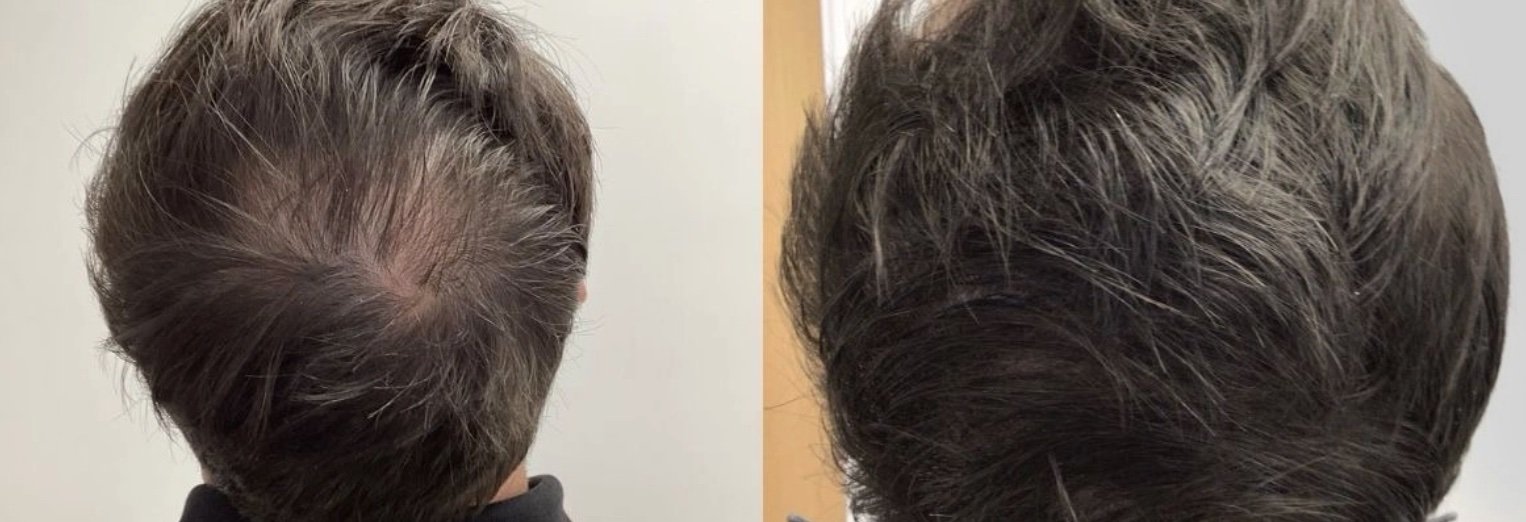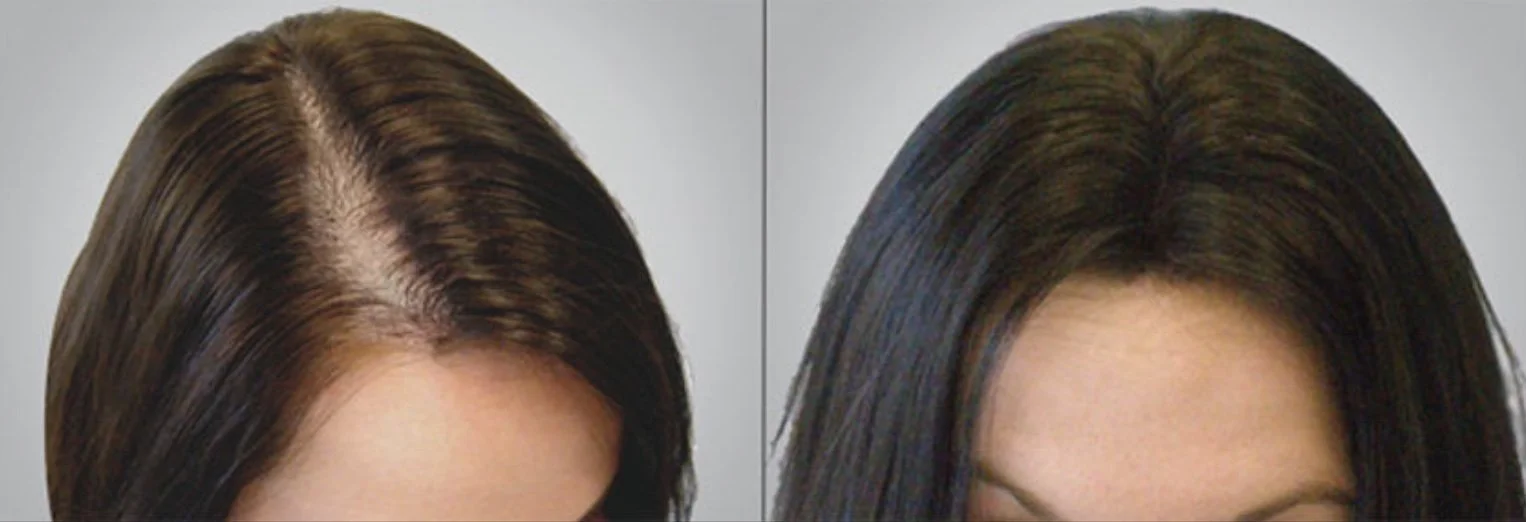iPRF for hair growth and thickening.
Various Sheffield locations
Qualified Phlebotomist
PRP but better!
Injectable Platelet-Rich Fibrin (iPRF) is the same as Platelet-Rich Plasma (PRP) - but better. It is a regenerative treatment that uses your body's own healing power to stimulate cellular repair. It helps reverse hair thinning, promotes healthier hair growth and helps to thicken hair.
Additionally, you can add Polynucleotides to iPRF for a complete cellular rejuvenation no other combination of therapies can match.
Our expert clinician Lana Todd specialises in providing the iPRF treatments in Sheffield.
Read on for more information.
mrs.todd wellness
iPRF : Injectable Platelet-Rich Fibrin
iPRF (Injectable Platelet-Rich Fibrin) treatment is a popular option for hair restoration and is used to promote hair growth by harnessing the healing and regenerative properties of your own blood.
What’s the difference between PRP and iPRF? ➚
Appointments are 60mins long and take place at our Sheffield clinic.
How it works
Our clinician Lana Todd takes a small blood sample from you.
Your blood is spun in a centrifuge to separate the different blood cells.
The plasma is selected and re-injected.
At booking stage, you will provide information about your requirement, and we’ll call you in advance to have a pre-appointment consultation.
-
Blood Collection and Processing: A small sample of your blood is drawn and processed in a centrifuge at a slower speed to concentrate the platelets, fibrin, and stem cells. This results in iPRF, a more refined form of platelet-rich plasma (PRP) that contains not only platelets but also fibrin and growth factors, which help enhance tissue regeneration.
Injection into the Scalp: The concentrated iPRF is then injected into the scalp, specifically into areas of thinning or balding hair. The micro-injuries caused by the needles during injection stimulate the scalp and increase blood circulation.
Stimulation of Hair Follicles: The growth factors and stem cells present in iPRF help stimulate dormant or weakened hair follicles, encouraging them to enter the active growth phase (anagen phase). This leads to increased hair density, thickness, and overall hair health.
-
Stimulates Hair Regrowth: iPRF helps rejuvenate hair follicles, promoting the growth of new, thicker hair.
Improves Hair Density and Thickness: By strengthening existing hair follicles and encouraging new hair growth, iPRF leads to fuller and thicker hair.
Non-Surgical Treatment: iPRF is a minimally invasive, natural treatment that doesn’t require surgery or long recovery times, making it an attractive option for individuals looking to avoid more invasive procedures.
Safe and Natural: Since iPRF is derived from your own blood, there is minimal risk of side effects or allergic reactions.
Enhances Scalp Health: iPRF improves blood circulation to the scalp and nourishes hair follicles, leading to healthier hair overall.
Long-lasting Results: The results from iPRF treatment can last for several months, with ongoing treatments helping maintain and improve hair growth over time.
-
iPRF is most effective for individuals who have:
Early stages of hair thinning or loss: iPRF works best when hair follicles are still active and capable of regrowth.
Male or Female Pattern Baldness: It can be used for androgenic alopecia, a common cause of hair loss in both men and women.
Hair Loss due to Stress or Nutritional Deficiencies: It can help in cases where hair loss is linked to external factors like stress, diet, or hormonal changes.
Overall, iPRF for hair growth is a highly effective, natural, and non-invasive option for people looking to address thinning hair and improve overall hair quality.
-
iPRF (Injectable Platelet-Rich Fibrin) is an excellent treatment for individuals who have undergone a hair transplant for several reasons:
1. Enhances Hair Growth Post-Transplant:
After a hair transplant, iPRF can help accelerate the growth of newly transplanted hair follicles. The growth factors, stem cells, and fibrin in iPRF promote faster healing, stimulate the transplanted follicles, and encourage them to enter the active growth phase, resulting in stronger and thicker hair.
2. Improves Scalp Healing and Recovery:
Hair transplant procedures can sometimes lead to swelling, inflammation, or discomfort in the scalp. iPRF’s anti-inflammatory properties help reduce post-surgical swelling, enhance circulation, and support the healing process. It can reduce recovery time and ensure that the scalp heals properly, allowing the transplanted hair follicles to settle and integrate effectively.
3. Boosts Overall Hair Follicle Health:
Even after a successful transplant, maintaining the health of hair follicles is crucial for long-term success. iPRF helps maintain follicle health by nourishing them with essential growth factors. This promotes ongoing hair growth and ensures that the newly transplanted hair continues to thrive.
4. Reduces Hair Shedding:
After a transplant, it’s common for the transplanted hairs to shed temporarily before new growth begins. iPRF can help minimize excessive shedding and speed up the re-growth process by supporting follicular regeneration and enhancing the growth of new, healthy hair.
5. Strengthens Existing Hair:
iPRF can also be used in areas surrounding the transplant to help strengthen and thicken existing hair. By rejuvenating nearby follicles, it creates a fuller, denser appearance, enhancing the overall aesthetic outcome of the transplant.
6. Non-Surgical and Minimal Downtime:
Since iPRF uses your own blood and is a non-invasive procedure, it is a safe and natural treatment that can be easily integrated into the post-transplant care routine. There’s little to no downtime, making it a convenient option for those who want to boost the results of their transplant without undergoing further surgery.
7. Long-Term Maintenance:
iPRF treatments can be used as a long-term solution to maintain the health and growth of transplanted hair, ensuring lasting results. Regular sessions after the transplant can help maintain the vitality of the hair and prevent future thinning or hair loss.
In Summary:
For individuals who have had a hair transplant, iPRF is beneficial because it promotes faster healing, boosts hair follicle growth and health, reduces hair shedding, and strengthens the overall results of the transplant. It’s a natural, safe, and effective way to enhance and maintain the outcomes of hair restoration procedures.

You can add Polynucleotides to your iPRF treatment.
The combination of Polynucleotides with the iPRF therapy offers a holistic approach to hair restoration, targeting various aspects of the hair growth cycle from improving follicle health, stimulating regeneration, reducing inflammation, and enhancing scalp conditions for better and longer-lasting results.
Why add Polynucleotides to an iPRF treatment?
Polynucleotides help promote hair follicle regeneration and can stimulate hair growth, while PRP / iPRF contains growth factors that promote healing and tissue regeneration. Together, they create a synergistic effect, significantly boosting the regenerative potential for hair follicles.
-
Improved Scalp Healing and Regeneration
Polynucleotides support cell regeneration and tissue repair, while PRP/PRF contains platelets that release growth factors to help heal damaged tissues. This combination accelerates the healing of the scalp and improves the overall health of hair follicles, creating a more favourable environment for hair growth.Reduction of Inflammation
Both PRP/PRF and Polynucleotides have anti-inflammatory properties. By reducing scalp inflammation, they can help alleviate conditions like androgenic alopecia (male and female pattern baldness) and other scalp disorders that hinder hair growth.Promotion of Collagen Synthesis
PRF and PRP contribute to collagen production, which helps in the structural support of the scalp and hair follicles. Adding Polynucleotides to the mix further boosts collagen synthesis, leading to stronger, healthier hair follicles and better scalp integrity.Improved Microcirculation
PRP and PRF promote improved blood circulation in the scalp, ensuring a better supply of nutrients and oxygen to hair follicles. The addition of Polynucleotides can further enhance microcirculation, promoting better nutrient delivery to the hair follicles and improving the overall hair growth environment.Enhanced Cell Regeneration and DNA Repair
Polynucleotides can help repair DNA damage in hair follicles, and when combined with PRP/PRF, which provides growth factors that promote cell regeneration, it can speed up the recovery of damaged hair follicles and encourage the production of new, healthier hair.Longer-lasting Results
The combination of PRP/PRF (which promotes initial hair growth and revitalises follicles) with Polynucleotides (which provide ongoing support for tissue regeneration) can lead to more sustained and long-term hair growth results.Reduction of Hair Loss
Together, PRP/PRF and Polynucleotides target multiple aspects of hair loss — from improving the function of hair follicles to reducing inflammation and enhancing the regenerative environment. This dual-action approach helps reduce hair thinning and hair shedding over time.Safe and Natural Treatment
Both PRP/PRF and Polynucleotides are derived from your own blood, making them safe and free from adverse reactions, providing a natural way to stimulate hair growth and scalp health.Boosting Results from Other Treatments
When combined with other hair restoration treatments, such as hair transplant surgery, PRP/PRF and Polynucleotides can enhance the effectiveness of these treatments by supporting quicker recovery, boosting follicle health, and promoting new hair growth.
before + after treatment
before + after treatment
Book your iPRF appointment in Sheffield :



